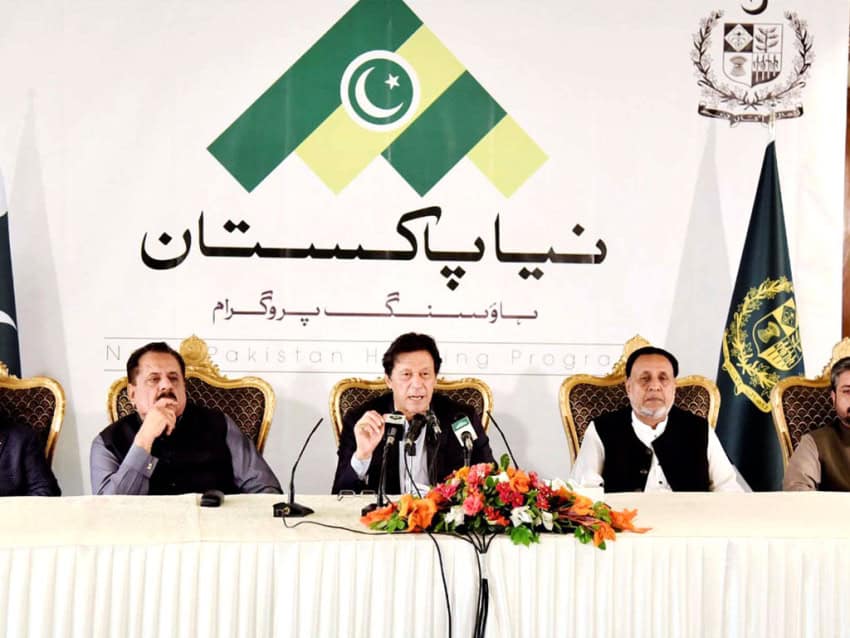There is no dispute regarding the shortage of affordable housing in Pakistan. It is estimated that there is a shortage of over 10 million houses in the country, which will continue to increase as population, and urbanization increases.
Dilapidated infrastructure, lack of investment in electricity and water distribution, as well as the absence of any interest from Federal or Provincial governments in addressing water shortage has led to an unprecedented backlog of housing. Available housing is either not affordable, or it lacks access to basic infrastructure and utilities.
Prime Minister of Pakistan announced the ‘Naya Pakistan Housing Scheme’ yesterday, following up on campaign promises to build 5 million houses over the next 5 years. A very ambitious target, which can cut the housing backlog in half, support dozens of allied industries, create millions of jobs, and provide the necessary stimulus for economic growth. It’s a feel-good story which starts to fade out, once we start looking at the numbers.
The Nuts & Bolts
Although there is no concrete plan yet but based on various press conferences, and interviews of those at the helm – it is estimated that the cost of construction of a single house (or unit) is between two and five million rupees. The government’s spokesperson on Economy & Energy, Dr Farrukh Saleem in an interview also stated that mortgage will be available for these houses, where the down payment (or equity) will be 10 percent.
Basic fourth grade math tells us that cost of construction of 1 million houses in the first year (assuming the construction is spread equally over five years), will be around PKR 2 trillion. This is actually almost half of the total tax revenue of the country. Ten percent of this amount, which is PKR 200 billion is expected to be provided by potential homeowners, while debt of around PKR 1.8 trillion needs to be raised in the first year (or less, depending on how many houses are planned).
To put things in perspective, the current size of housing loans is around PKR 85 billion – which implies that we may expect to raise 21 times the amount of already existing loans. Existing deposit base of PKR 12.7 trillion of local Banks is simply not big enough to accommodate housing finance of PKR 1.8 trillion, and that’s just for one year.
Interest Rates & Affordability
In markets where mortgage financing is a success, interest rates are fairly low, as that allows individuals to spread out their instalments over an extended period without significantly hurting their budget.
A contractionary monetary policy is already underway, as interest rates have increased by 2.75 percent in the last few months, and as conditions of the IMF program are implemented, another hike of 2-3 percent cannot be ruled out.
Even at a Policy Rate of 8.5 percent, with the borrower paying back mortgage over 20 years, the monthly instalment for a basic household unit comes to around PKR 15,600 – which is almost equivalent to the minimum wage prevalent in the country.
A basic thumb rule to work with is that monthly instalment should not be greater than 30 percent of monthly income. Existing interest rates are certainly not favourable for the vulnerable economic segment, for whom the units are being constructed.
The Government spokesperson during an interview was of the view that the government can raise financing to fund mortgages at a lower rate than the Policy rate. Just how the government can raise such massive funding at a rate less than what it is paying on Treasury Paper is simply not possible.
Going Forward
The idea is novel, and certainly ambitious, but not realistic, and certainly not grounded in reality. A policy direction needs to have measurable, and attainable goals, even in case of stretch targets. It will certainly be a Herculean achievement, even if the Government is able to deliver 100,000 houses in the first year, or 10 percent of its target of 5 million, in five years.
The absence of an identifiable roadmap, expectations of borrowing trillions at below market rates in a rising interest rate environment, and the struggle to meet haughty campaign promises are ingredients which may set back housing finance by a few more years, rather than support growth.
It is expected that once the task force finalizes its roadmap and recommendations, a more realistic number will come in the picture, such that the whole Naya Pakistan Housing Scheme won’t simply be a house of cards.














